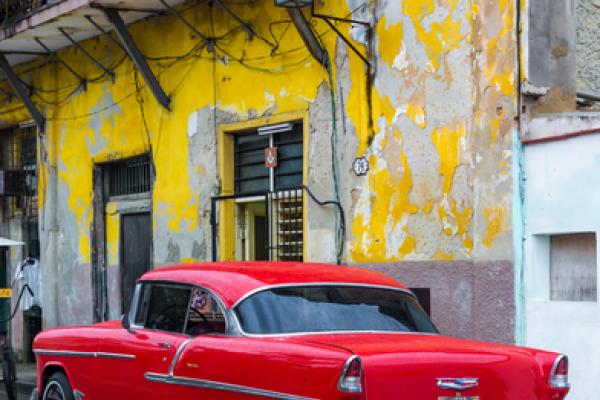I just returned from a weeklong visit to Cuba. A team of seven people from First Baptist Church Greenville went to be with and learn from our partner church in Guanahay, Cuba — La Iglesia Bautista del Camino. After time in such a colorful country, here are some colorful thoughts of my own for three of our Cuban friends.
If Javier were a color, he would be blue. He is kind. "It is important to look each other in the eyes," he said on Easter morning. "So look into each others’ eyes, really, now, look into each others’ eyes, for at the end of the day you will be able to say that you have looked into the eyes of Christ."
You can look into Javier’s eyes and see kindness — see Christ. He is patient. "Everyone calls him hermano," say his friends, "because he is so patient." You can feel his arm around your shoulder and the warmth of his smile upon your face and feel patience — feel Christ. He is intelligent. "Let's begin our time together by talking about the reality of Cuba and the reality of the United States, the socio-economic realities, the political realities, and the religious realities. I want to know what you see, what you feel, and what you think from your own experience with your own voice. Everyone's voice is important and everyone should be heard," he began in our first meeting together. You can listen to his teaching and hear the genius of Gustavo Gutierrez and Paulo Friere — hear Christ. Blue is the color of kindness, patience, and intelligence. To me, it is the color of Javier.
Candida is yellow. She is beauty. "Welcome to my patio," she greets. I look at her face, a face deeply wrinkled and spotted with years and years of life and work, a face imbued with a smile the color of the sun, and eyes that twinkle like the stars on a clear night in the Cuban countryside. You can look into her face and see beauty — see Christ. She is giving. "I want to give this cherimoya to you, here, you open it like this and eat it like this...let me cut this coconut for you, here, take this straw and drink it like this...please, take this home with you, it is from my patio, it is from my heart." You can spend time with her and know that old saying from the good book, “My cup runneth over” — know Christ. She is hope. "Before I began my patio project, I was depressed. I had no one to share my life with, no meaningful work to do with my mind, my hands, and my feet. But the patio project changed my life. It gave me life and work again, a chance to plant my hands into the good earth, and I am happy." You can work beside her and experience hope — experience Christ. Yellow is the color of beauty, giving, and hope. To me, it is the color of Candida.
Santiago is red. He is joy. "Ah, I am so happy to see you," he says each time he sees you. "We're going to have a fun time together!" If you are in a room with a group of people, and it is quiet, and you are having a tough time conversing with each other and relating to each other, then he can walk into the room and bring meaningful talk and huge hugs and a transformed room. You can be with him and find joy — find Christ. He is action. "Let me do this for you...please let me do that for you...how can I help you?" he asks. He can provide a place for you to sleep, food for you to eat, and visits for you to make to patio projects all around Cuba. If you need him he is action — he is Christ. He is laughter. Bootie recorded his laugh one time and people use his laugh to cheer themselves. When you hear it, you laugh, too. His laugh is happiness, it is healing, it is holy. Listen to his laugh — listen to Christ. Red is the color of joy, action, and laughter. To me, it is the color of Santiago.
These three colors — blue, yellow, and red — are the primary colors, the colors from which all other colors are created. These three people — Javier, Candida, and Santiago — are our Cuban friends, the friends who paint the colors of Cuba onto our hearts, the friends who open our hearts to all of the beautiful colors in Cuba and all of the beautiful people there, too.
Trevor Scott Barton is an elementary school teacher in Greenville, SC. He is a blogger for the Teaching Tolerance project of the Southern Poverty Law Center.
Got something to say about what you're reading? We value your feedback!
